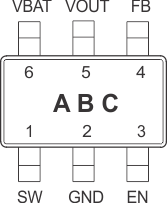-
TPS61071-Q1 90% Efficient Synchronous Boost Converter With 600-mA Switch
- 1 Features
- 2 Applications
- 3 Description
- 4 Revision History
- 5 Pin Configuration and Functions
- 6 Specifications
- 7 Detailed Description
- 8 Application and Implementation
- 9 Power Supply Recommendations
- 10Layout
- 11Device and Documentation Support
- 12Mechanical, Packaging, and Orderable Information
- IMPORTANT NOTICE
TPS61071-Q1 90% Efficient Synchronous Boost Converter With 600-mA Switch
1 Features
- Qualified for Automotive Applications
- AEC-Q100 Qualified With the Following Results:
- Device Temperature Grade 2: –40°C to 105°C Ambient Operating Temperature Range
- Device HBM Classification Level 1C
- Device CDM Classification Level C6
- 90% Efficient Synchronous Boost Converter
- 75-mA Output Current at 3.3 V From 0.9-V Input
- 150-mA Output Current at 3.3 V From 1.8-V Input
- Device Quiescent Current: 19 µA (Typical)
- Input Voltage Range: 0.9 V to 5.5 V
- Adjustable Output Voltage Up to 5.5 V
- Power-Save Mode Version Available for
Improved Efficiency at Low Output Power - Load Disconnect During Shutdown
- Overtemperature Protection
- Small 6-Pin Thin SOT Package
2 Applications
- Automotive Power Supplies
- Boost Power Supplies
3 Description
The TPS61071-Q1 device provides a power supply solution for products powered by lower-voltage DC rails or a one-cell, two-cell, or three-cell alkaline, NiCd or NiMH, or one-cell Li-ion or Li-polymer battery. Output currents can go as high as 75 mA, while using a single-cell alkaline, and discharge down to 0.9 V. The device can also generate 5 V at 200 mA from a 3.3-V rail or a Li-ion battery. The boost converter is based on a fixed frequency, pulse-width-modulation (PWM) controller using a synchronous rectifier to obtain maximum efficiency. The maximum peak current in the boost switch is limited typically to a value of 600 mA.
The TPS61071-Q1 output voltage is programmed by an external resistor divider. To minimize battery drain, disable the converter. During shutdown, the load disconnects from the battery. The device package is a 6-pin thin SOT package (DDC).
Device Information(1)
| PART NUMBER | PACKAGE | BODY SIZE (NOM) |
|---|---|---|
| TPS61071-Q1 | SOT (6) | 1.60 mm × 2.90 mm |
- For all available packages, see the orderable addendum at the end of the data sheet.
Typical Application Circuit

4 Revision History
Changes from * Revision (May 2010) to A Revision
- Added ESD Ratings table, Feature Description section, Device Functional Modes, Application and Implementation section, Power Supply Recommendations section, Layout section, Device and Documentation Supportsection, and Mechanical, Packaging, and Orderable Information sectionGo
- Changed pinout illustration.Go
- Deleted Dissipation Ratings sectionGo
- Updated Soft Start and Short-Circuit Protection sectionGo
- Updated Device EnablesectionGo
- Changed Figure 20Go
- Updated Inductor Selection sectionGo
5 Pin Configuration and Functions
Pin Functions
| PIN | I/O | DESCRIPTION | |
|---|---|---|---|
| NO. | NAME | ||
| 1 | SW | I | Boost and rectifying switch input |
| 2 | GND | — | Device (IC) ground connection for logic and power |
| 3 | EN | I | Enable input (1/VBAT enabled, 0/GND disabled) |
| 4 | FB | I | Voltage feedback for programming the output voltage |
| 5 | VOUT | O | Boost converter output |
| 6 | VBAT | I | Supply voltage |
6 Specifications
6.1 Absolute Maximum Ratings
over operating free-air temperature range (unless otherwise noted)(1)| MIN | MAX | UNIT | |
|---|---|---|---|
| Input voltage range on SW, VOUT, VBAT, EN, FB | –0.3 | 7 | V |
| Operating virtual junction temperature, TJ | –40 | 150 | °C |
| Storage temperature, Tstg | –65 | 150 | °C |
6.2 ESD Ratings
| VALUE | UNIT | |||
|---|---|---|---|---|
| V(ESD) | Electrostatic discharge | Human-body model (HBM), per AEC Q100-002(1) | ±2000 | V |
| Charged-device model (CDM), per AEC Q100-011 | ±1000 | |||
6.3 Recommended Operating Conditions
| MIN | NOM | MAX | UNIT | |
|---|---|---|---|---|
| Supply voltage at VBAT, VI | 0.9 | 5.5 | V | |
| Operating free air temperature range, TA | –40 | 105 | °C | |
| Operating virtual junction temperature range, TJ | –40 | 125 | °C |
6.4 Thermal Information
| THERMAL METRIC(1) | TPS61071-Q1 | UNIT | |
|---|---|---|---|
| DDC (SOT) | |||
| 6 PINS | |||
| RθJA | Junction-to-ambient thermal resistance | 139.1 | °C/W |
| RθJC(top) | Junction-to-case (top) thermal resistance | 34.8 | °C/W |
| RθJB | Junction-to-board thermal resistance | 42.5 | °C/W |
| ψJT | Junction-to-top characterization parameter | 1.4 | °C/W |
| ψJB | Junction-to-board characterization parameter | 40.7 | °C/W |
| RθJC(bot) | Junction-to-case (bottom) thermal resistance | N/A | °C/W |
6.5 Electrical Characteristics
over recommended free-air temperature range and over recommended input voltage range (typical at an ambient temperature range of 25°C) (unless otherwise noted)| PARAMETER | TEST CONDITIONS | MIN | TYP | MAX | UNIT | ||
|---|---|---|---|---|---|---|---|
| DC-DC STAGE | |||||||
| VI | Minimum input voltage range for start-up | RL = 270 Ω | 1.1 | 1.25 | V | ||
| Input voltage range, after start-up | TA = 25°C | 0.9 | 5.5 | ||||
| VO | Output voltage range | 1.8 | 5.5 | V | |||
| V(FB) | Feedback voltage | TA = 25°C | 490 | 500 | 510 | mV | |
| f | Oscillator frequency | 960 | 1200 | 1440 | kHz | ||
| I(SW) | Switch current limit | VOUT= 3.3 V | 455 | 600 | 735 | mA | |
| Start-up current limit | 0.5 × ISW | mA | |||||
| Boost switch-on resistance | VOUT= 3.3 V | 480 | mΩ | ||||
| Rectifying switch-on resistance | VOUT= 3.3 V | 600 | mΩ | ||||
| Total accuracy (including line and load regulation) | 5% | ||||||
| Line regulation | 1% | ||||||
| Load regulation | 1% | ||||||
| Quiescent current | VBAT | IO= 0 mA, V(EN)= VBAT = 1.2 V, VOUT = 3.3 V, TA = 25°C |
0.5 | 1 | µA | ||
| VOUT | 190(1) | 300(1) | |||||
| 20(2) | |||||||
| Shutdown current | V(EN) = 0 V, VBAT = 1.2 V, TA = 25°C | 0.05 | 0.5 | µA | |||
| CONTROL STAGE | |||||||
| V(UVLO) | Undervoltage lockout threshold | V(BAT) voltage decreasing | 0.8 | V | |||
| VIL | EN input low voltage | 0.2 × VBAT | V | ||||
| VIH | EN input high voltage | 0.8 × VBAT | V | ||||
| EN input current | Clamped on GND or VBAT | 0.01 | 0.1 | µA | |||
| Overtemperature protection | 140 | °C | |||||
| Overtemperature hysteresis | 20 | °C | |||||
6.6 Typical Characteristics
Table 1. Table of Graphs
| FIGURE | ||
|---|---|---|
| Maximum output current | vs Input voltage | Figure 1 |
| Efficiency | vs Output current | Figure 2 |
| vs Output current | Figure 3 | |
| vs Output current | Figure 4 | |
| vs Input voltage | Figure 5 | |
| vs Input voltage | Figure 6 | |
| Output voltage | vs Output current | Figure 7 |
| vs Output current | Figure 8 | |
| No load supply current into VOUT | vs Input voltage | Figure 9 |
| Waveforms | Output voltage in continuous mode | Figure 10 |
| Output voltage in continuous mode | Figure 11 | |
| Load transient response | Figure 12 | |
| Load transient response | Figure 13 | |
| Line transient response | Figure 14 | |
| Line transient response | Figure 15 | |
| Start-up after enable | Figure 16 | |
| Start-up after enable | Figure 17 |
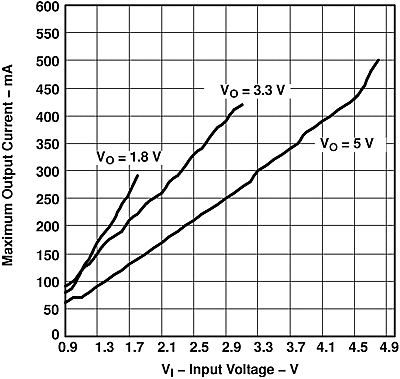 Figure 1. Maximum Output Current vs Input Voltage
Figure 1. Maximum Output Current vs Input Voltage
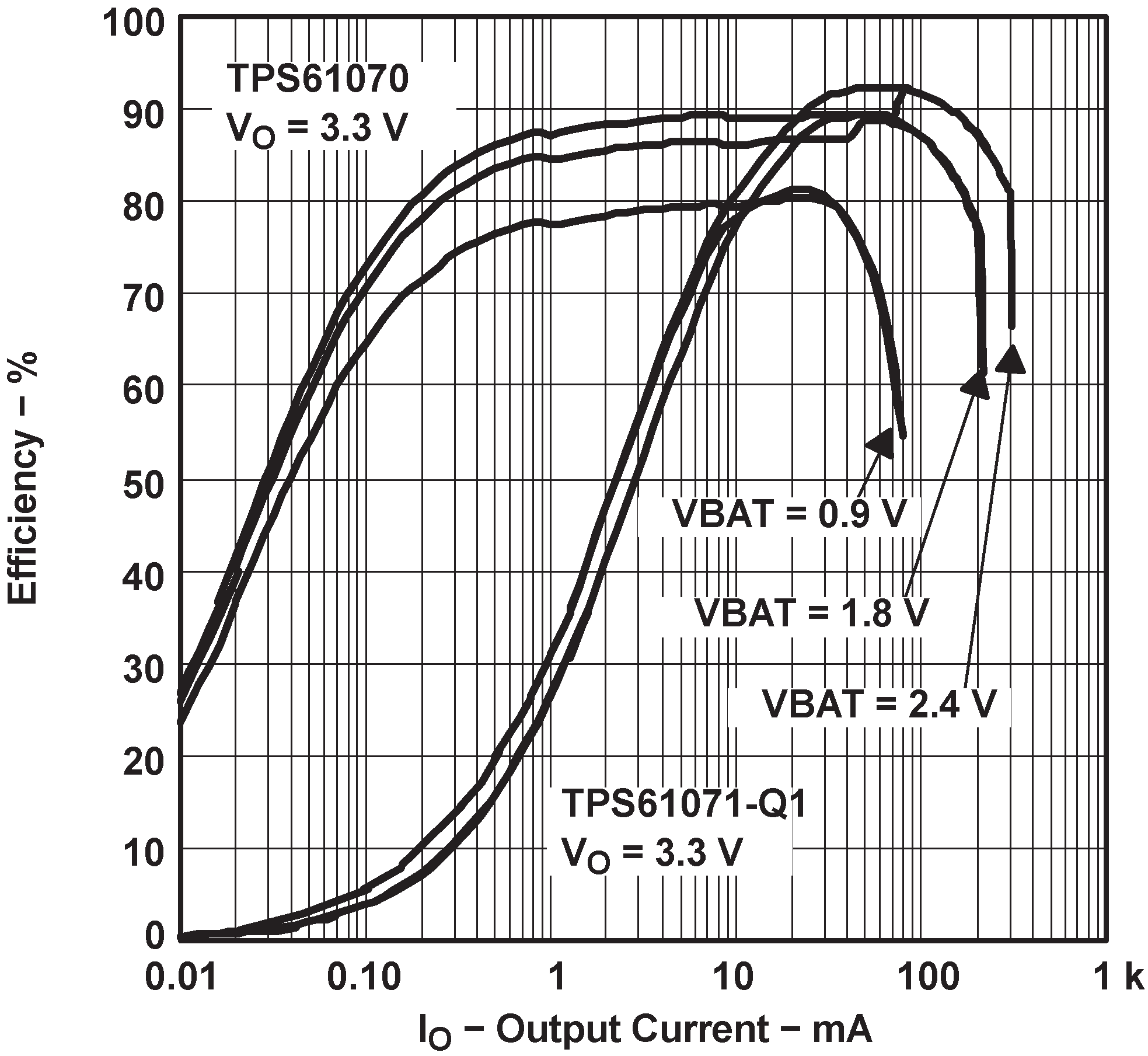 Figure 3. Efficiency vs Output Current
Figure 3. Efficiency vs Output Current
 Figure 5. Efficiency vs Input Voltage
Figure 5. Efficiency vs Input Voltage
 Figure 7. Output Voltage vs Output Current
Figure 7. Output Voltage vs Output Current
 Figure 9. No Load Supply Current Into VOUT vs Input Voltage
Figure 9. No Load Supply Current Into VOUT vs Input Voltage
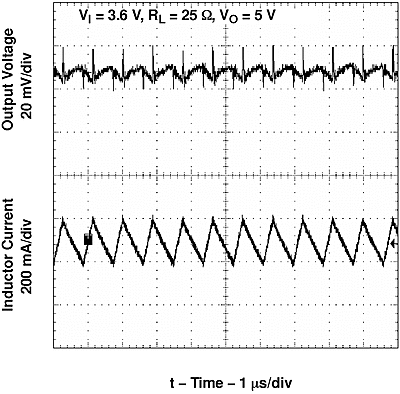 Figure 11. TPS61071 Output Voltage in Continuous Mode
Figure 11. TPS61071 Output Voltage in Continuous Mode
 Figure 13. TPS61071 Load Transient Response
Figure 13. TPS61071 Load Transient Response
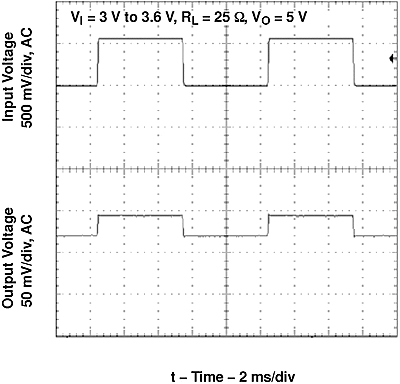 Figure 15. TPS61071 Line Transient Response
Figure 15. TPS61071 Line Transient Response
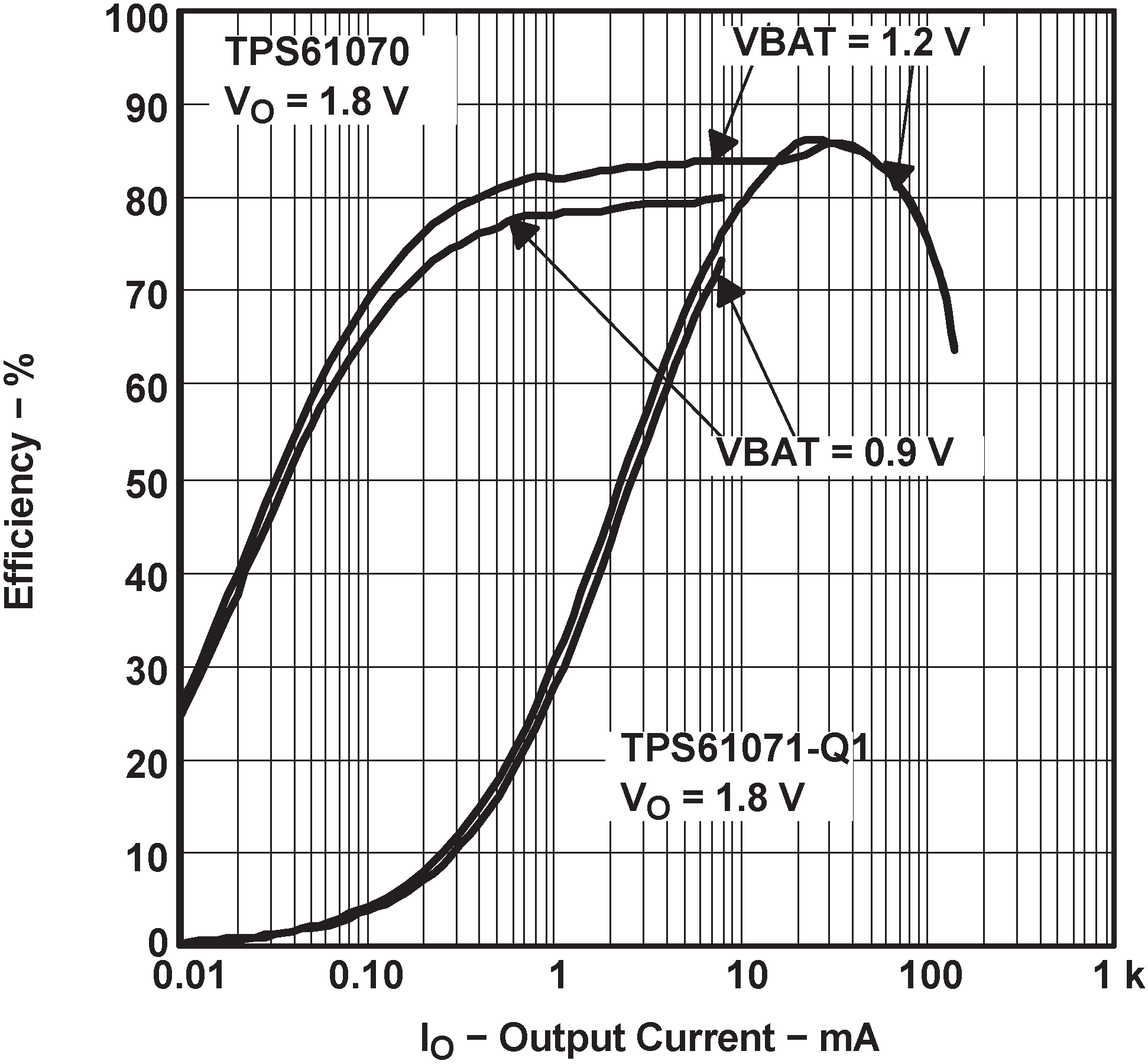 Figure 2. Efficiency vs Output Current
Figure 2. Efficiency vs Output Current
 Figure 4. Efficiency vs Output Current
Figure 4. Efficiency vs Output Current
 Figure 6. Efficiency vs Input Voltage
Figure 6. Efficiency vs Input Voltage
 Figure 8. Output Voltage vs Output Current
Figure 8. Output Voltage vs Output Current
 Figure 10. TPS61071 Output Voltage in Continuous Mode
Figure 10. TPS61071 Output Voltage in Continuous Mode
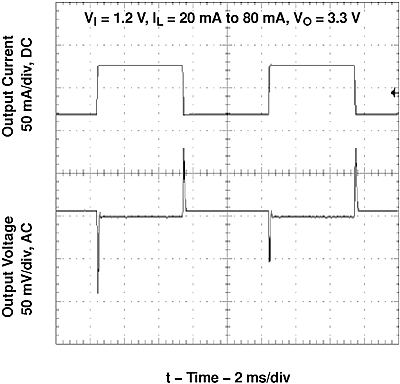 Figure 12. TPS61071 Load Transient Response
Figure 12. TPS61071 Load Transient Response
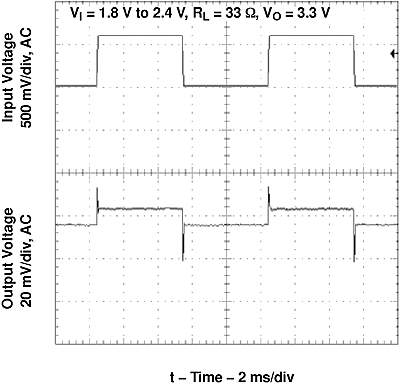 Figure 14. TPS61071 Line Transient Response
Figure 14. TPS61071 Line Transient Response
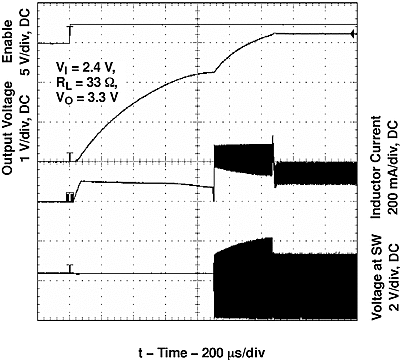 Figure 16. TPS61071 Start-Up After Enable
Figure 16. TPS61071 Start-Up After Enable
